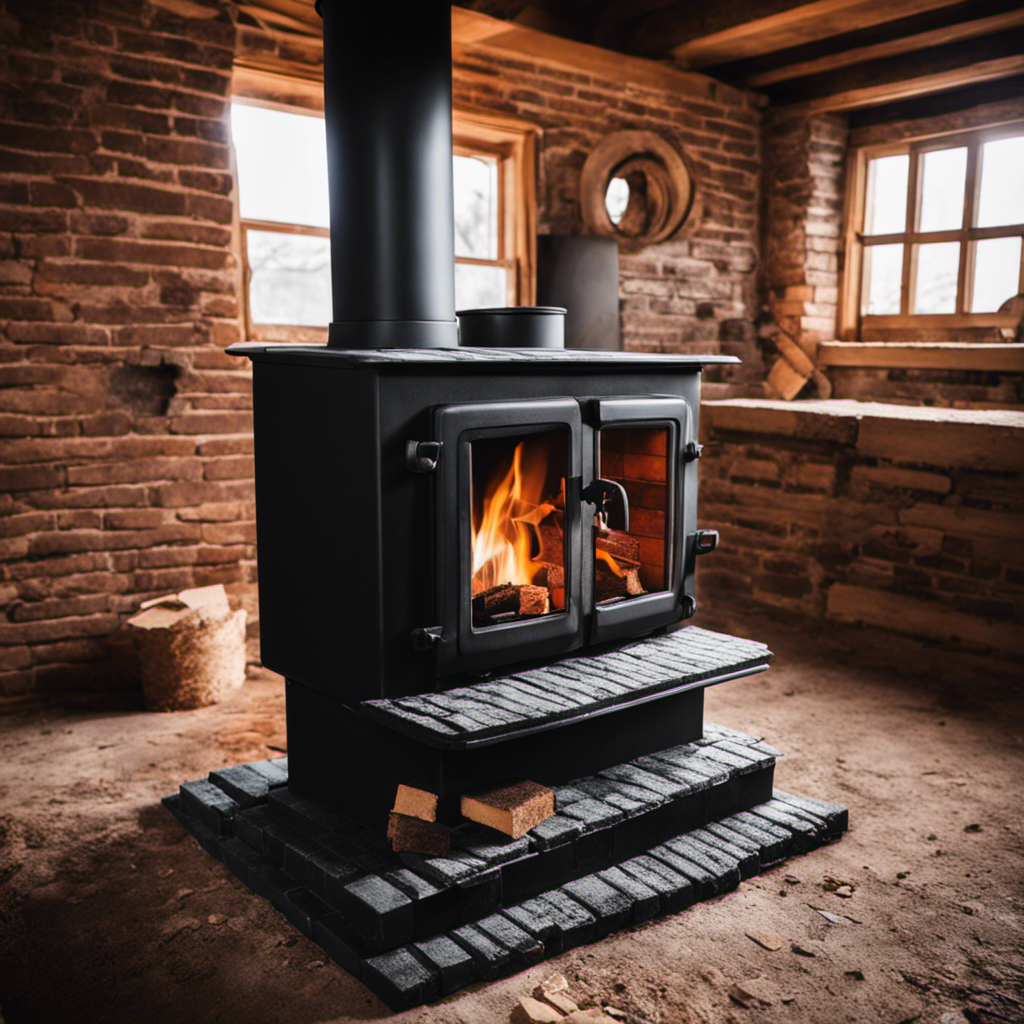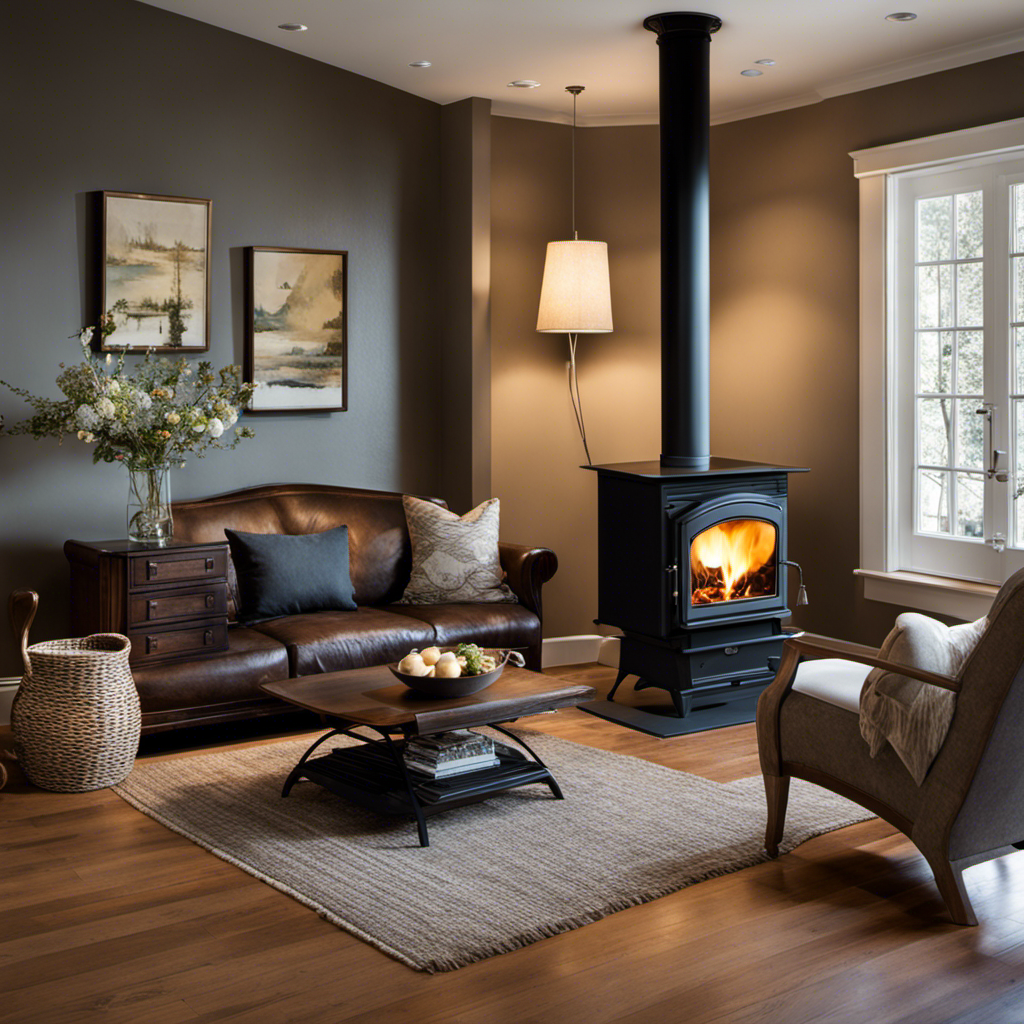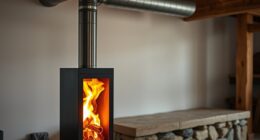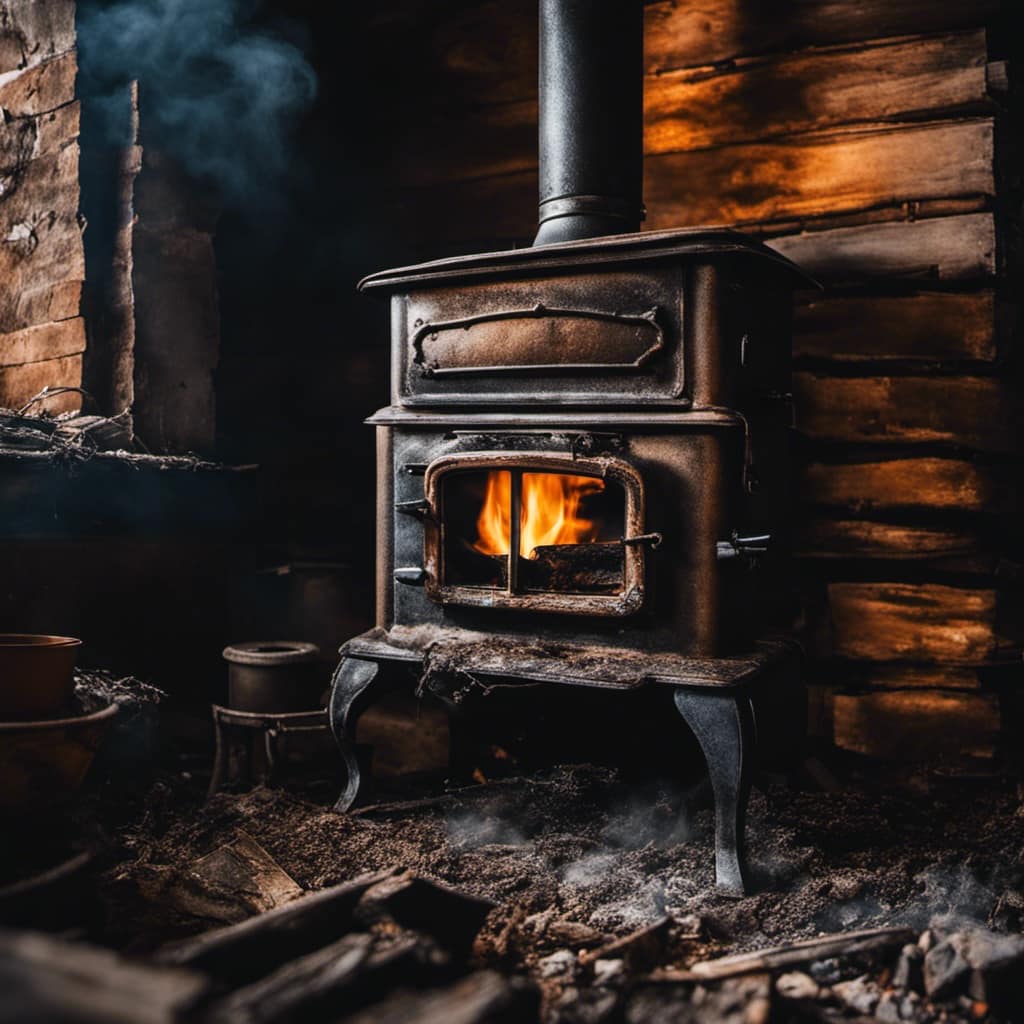
Every time I shut the door of my wood-burning stove, the flames diminish and eventually extinguish, leaving me in the cold darkness of a winter night. This scenario can be disheartening and aggravating, but there are explanations for why it occurs.
In this article, I will explore the possible airflow issues, insufficient fuel supply, damaged door seal, and improper draft control that could be causing this problem.
I’ll also provide you with maintenance and cleaning tips to keep your wood stove burning bright.
Key Takeaways
- Ventilation problems and a lack of oxygen can cause a wood stove to go out when the door is closed.
- Using properly seasoned and dry wood is essential for efficient burning and heat output.
- Damaged door seals can lead to drafts and reduce the efficiency of the wood stove.
- Proper adjustment of draft control settings and regular maintenance, including cleaning the stove and chimney, are necessary to ensure a wood stove stays lit with the door closed.
Possible Airflow Issues
I think the possible airflow issues are likely causing the wood stove to go out when I close the door. Ventilation problems can often lead to inconsistent burning and extinguishing of the fire.

In order to maintain a steady flame, it’s essential to have proper air circulation within the stove. When the door is closed, it restricts the airflow, resulting in a lack of oxygen for combustion. This can cause the fire to die out.
Temperature regulation is also affected by the airflow. Insufficient ventilation can lead to overheating or underheating of the wood stove, making it difficult to maintain a comfortable temperature in the room.
To address these issues, it’s important to ensure that the stove is properly installed, with adequate ventilation and proper air intake controls. Regular maintenance and cleaning of the stove and chimney are also crucial to prevent any blockages that may hinder airflow.
Insufficient Fuel Supply
There seems to be a problem with the wood stove’s insufficient fuel supply, as it’s causing the fire to go out frequently. One possible reason for this issue could be the quality of the fuel being used. It’s important to ensure that the wood being burned is properly seasoned and dry, as wet or unseasoned wood can lead to poor combustion and reduced heat output.
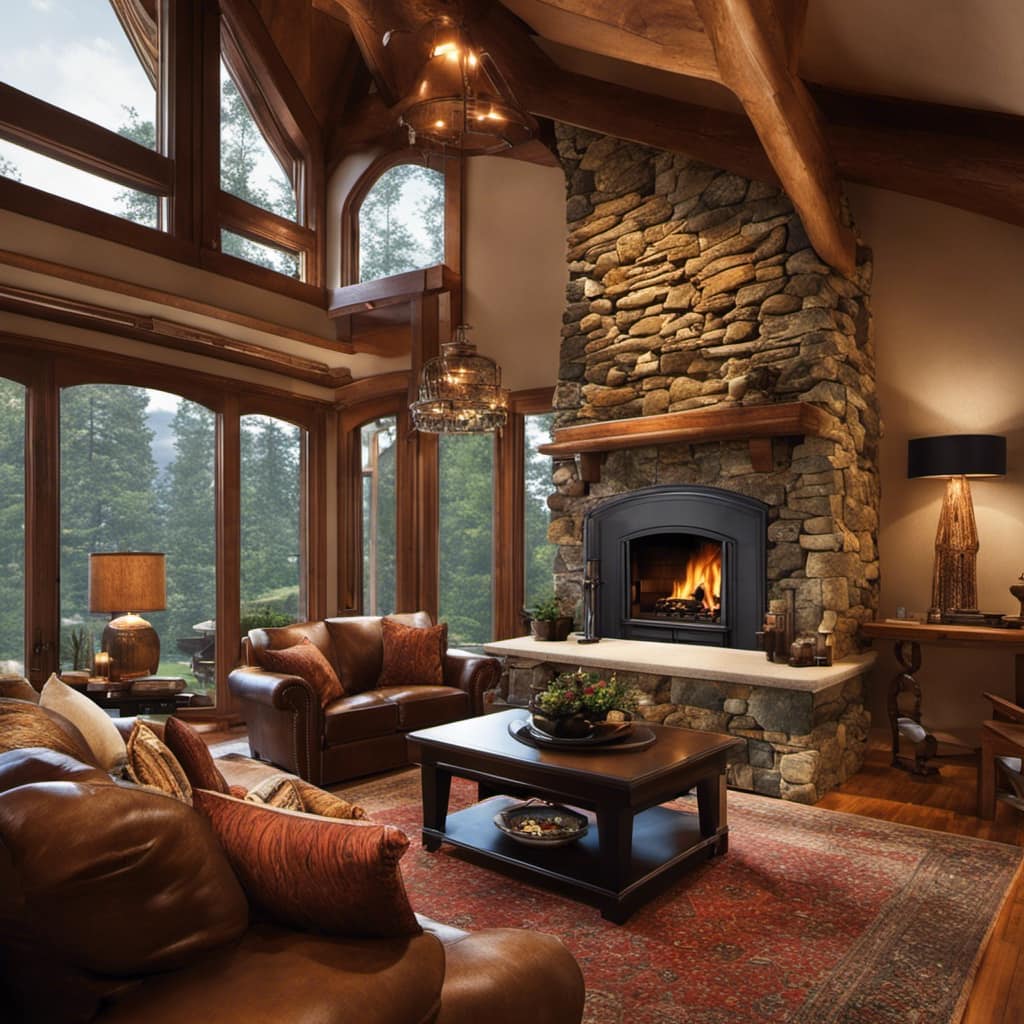
Another factor to consider is the size and density of the wood pieces being used. Using smaller, well-split pieces of wood can help improve the stove’s efficiency and prevent the fire from going out.
Additionally, it may be worth exploring alternative heating options, such as pellet stoves or gas fireplaces, which offer cleaner combustion and a more reliable heat source.
Ultimately, addressing the fuel quality and considering alternative heating options can help resolve the issue of the wood stove’s insufficient fuel supply.
Damaged Door Seal
The damaged door seal is causing drafts and reducing the stove’s efficiency, so I’ll need to replace it as soon as possible. Fixing the seal is crucial to ensure proper functioning of the wood stove.

Here are four things to consider when replacing the door seal:
-
Material: Choose a high-quality material such as fiberglass or ceramic rope that can withstand high temperatures and provide a tight seal.
-
Size: Measure the dimensions of your stove’s door to ensure you purchase the correct size seal.
-
Installation: Follow the manufacturer’s instructions for proper installation. It may involve removing the old seal, cleaning the surface, and attaching the new seal using adhesive or screws.
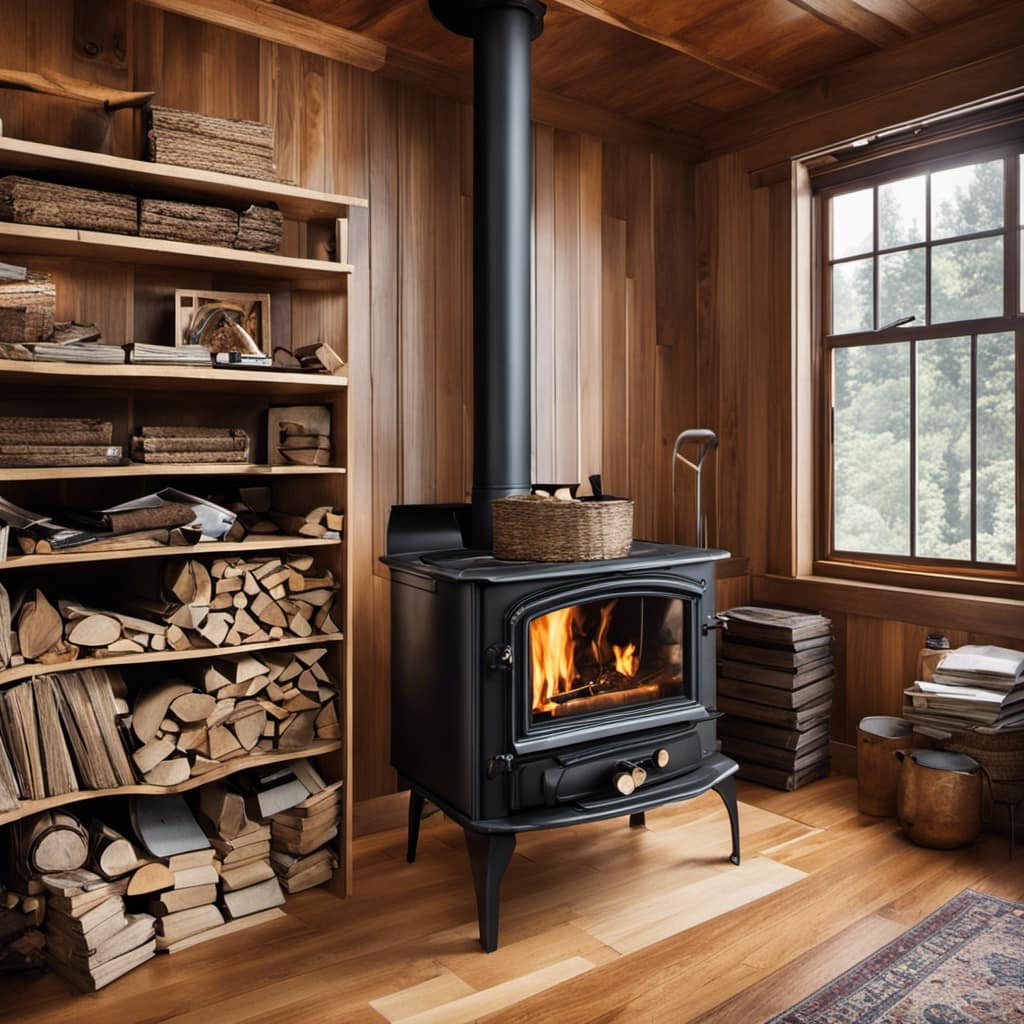
-
Maintenance: Regularly inspect and clean the door seal to prevent any damage that could compromise its effectiveness.
By fixing the seal, you’ll improve the stove’s efficiency, reduce drafts, and prevent heat loss. However, improper draft control can also contribute to the stove going out when the door is closed.
Let’s explore this issue further.
Improper Draft Control
To prevent the wood stove from going out when the door is closed, it’s important to properly adjust the draft control settings. Improper draft control can lead to insufficient airflow and a lack of oxygen, causing the fire to die out.
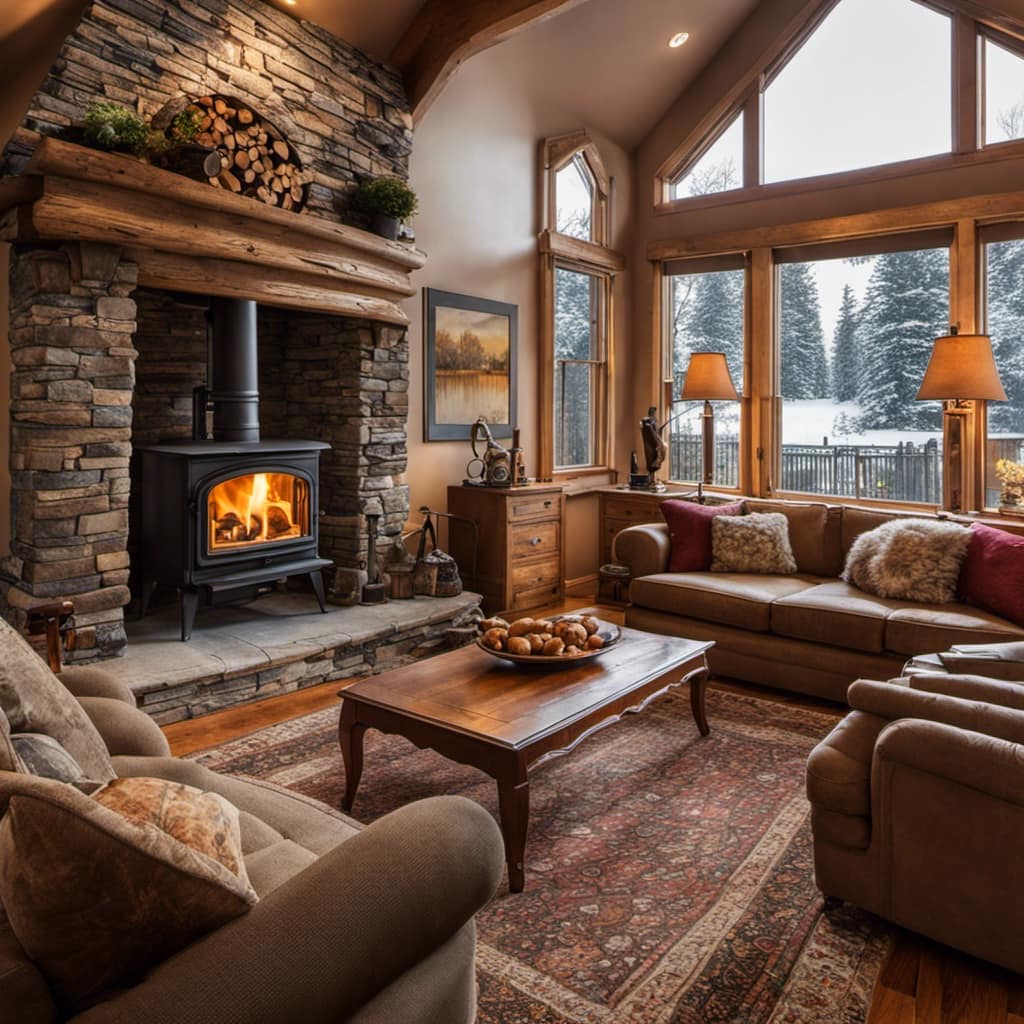
To troubleshoot this issue, start by checking if the draft control is fully open. If it is, then the problem may lie with a clogged chimney or flue. Make sure to clean them regularly to ensure proper ventilation.
Additionally, always follow safety precautions when dealing with a wood stove. Wear heat-resistant gloves and use a fireplace screen to prevent sparks from escaping. Remember to never leave the stove unattended and keep flammable objects at a safe distance.
By following these troubleshooting steps and safety precautions, you can ensure that your wood stove stays lit even with the door closed.
Now, let’s move on to maintenance and cleaning tips to keep your wood stove in optimal condition.
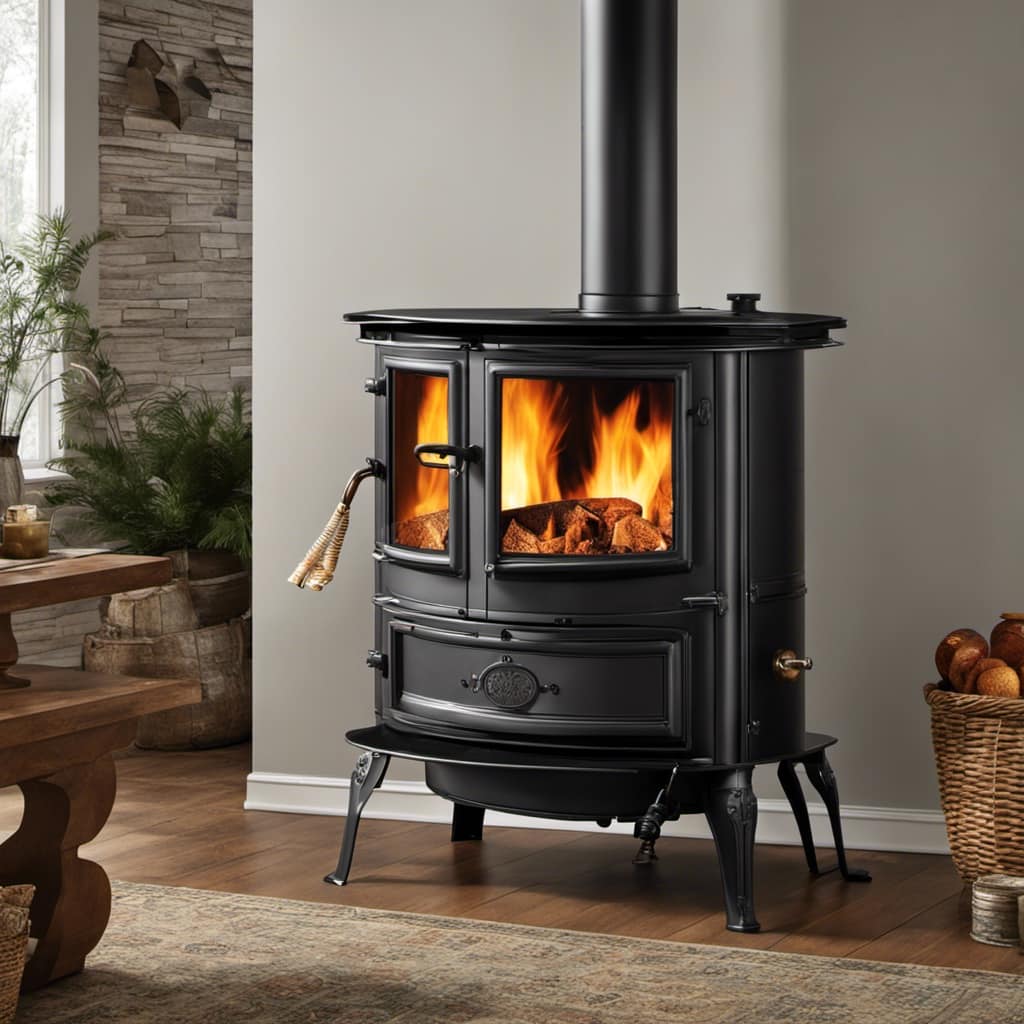
Maintenance and Cleaning Tips
I always make sure to regularly sweep the ash and debris from my wood stove, and then dispose of it safely. This not only helps maintain the efficiency of my stove but also prevents any potential fire hazards.
Here are some additional maintenance and cleaning tips to keep your wood stove in top condition:
-
Check the gaskets: Over time, the gaskets around the door and glass panels can wear out, leading to air leaks. Replace any damaged gaskets to ensure a tight seal and prevent heat loss.
-
Clean the flue: A dirty flue can restrict airflow and cause smoke to back up into your home. Regularly clean the flue to remove any creosote buildup and maintain proper ventilation.

-
Inspect the chimney: Inspect the chimney for any blockages or obstructions, such as bird nests or debris. Clear them out to maintain optimal airflow and prevent smoke from entering your home.
-
Troubleshoot draft issues: If your wood stove keeps going out when the door is closed, it may indicate an issue with the draft. Check for any obstructions in the air intake and adjust the damper accordingly to ensure proper ventilation.
Frequently Asked Questions
How Do I Know if My Wood Stove Is Experiencing Possible Airflow Issues?
To troubleshoot possible airflow issues with my wood stove, I check for obstructions in the chimney, ensure the damper is open, and adjust the air intake. Maximizing efficiency involves using dry, seasoned wood and maintaining a proper draft.
What Are Some Signs of an Insufficient Fuel Supply in a Wood Stove?
When troubleshooting wood stove airflow, signs of an insufficient fuel supply could include a weak flame, slow burning, or frequent need to add more wood. It’s like trying to drive a car on an empty tank.
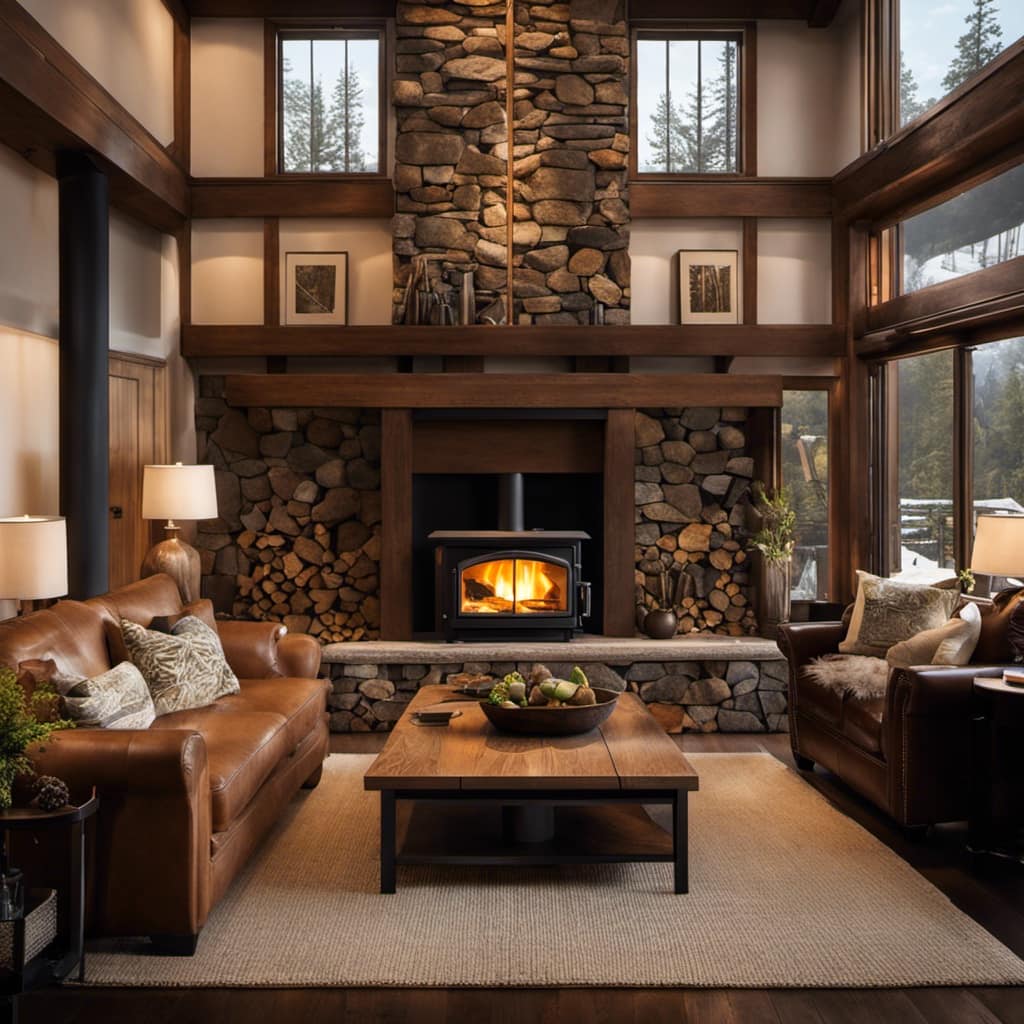
How Can I Check if My Wood Stove’s Door Seal Is Damaged?
To check for wood stove door seal damage, inspect the gasket for wear, tears, or gaps. Clean the seal and ensure it is properly aligned. Maintaining a good door seal is crucial for improving wood stove efficiency.
What Are the Consequences of Improper Draft Control in a Wood Stove?
Improper draft control in a wood stove can lead to various consequences. Possible airflow issues can result in poor combustion, reduced efficiency, increased smoke production, and even the stove going out when the door is closed.
What Are Some General Maintenance and Cleaning Tips for Wood Stoves?
Maintaining a wood stove requires regular cleaning to prevent buildup of creosote and ensure proper draft control. Tips include using a wire brush to clean the flue, inspecting gaskets for wear, and cleaning the glass door with a non-abrasive cleaner.
Conclusion
In conclusion, ensuring proper airflow and a sufficient fuel supply are crucial for maintaining a wood stove’s performance.
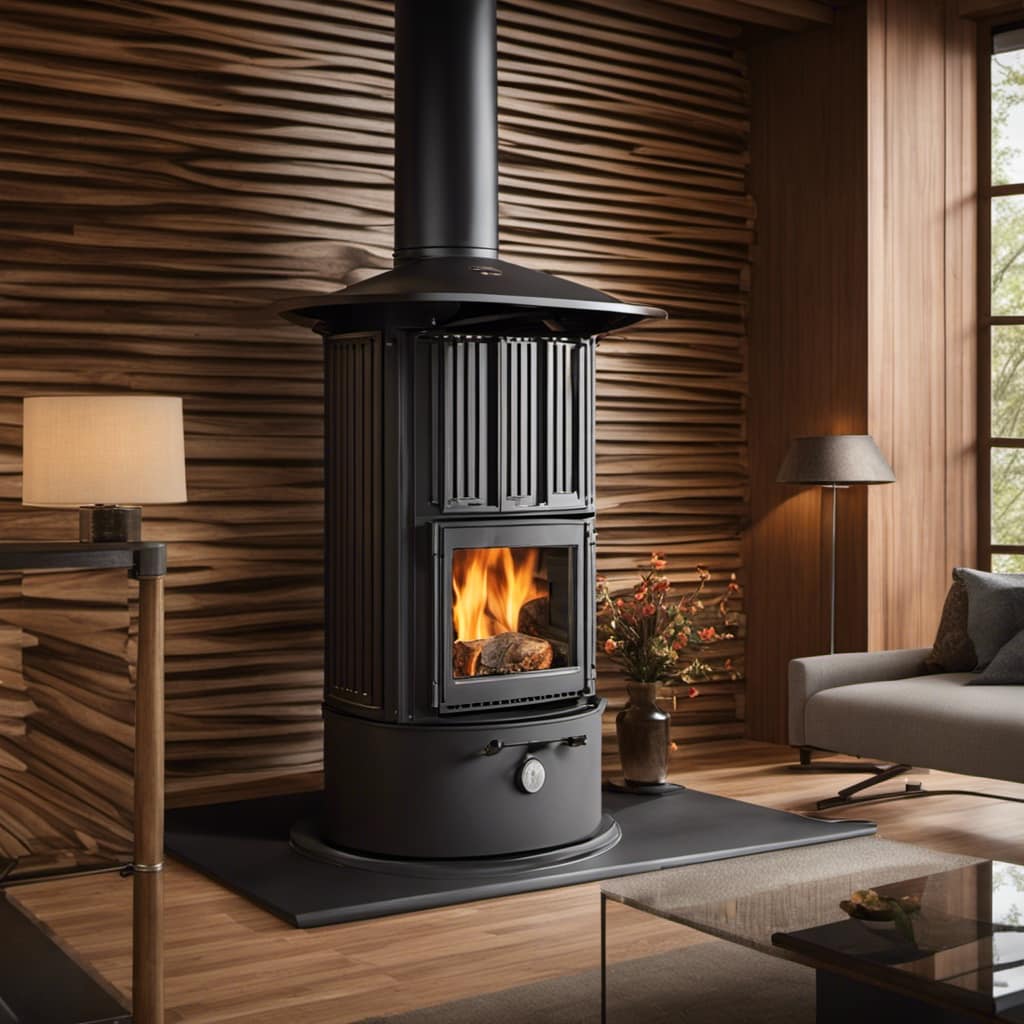
Additionally, regularly checking and replacing damaged door seals, as well as properly controlling the draft, are essential for efficient operation.
Just like a well-tuned engine, a well-maintained wood stove can provide warmth and comfort, making it the heart of a cozy home.
Growing up surrounded by the vast beauty of nature, Sierra was always drawn to the call of the wild. While others sought the comfort of the familiar, she ventured out, embracing the unpredictable and finding stories in the heartbeat of nature.
At the epicenter of every remarkable venture lies a dynamic team—a fusion of diverse talents, visions, and passions. The essence of Best Small Wood Stoves is crafted and refined by such a trio: Sierra, Logan, and Terra. Their collective expertise has transformed the platform into a leading authority on small wood stoves, radiating warmth and knowledge in equal measure.



